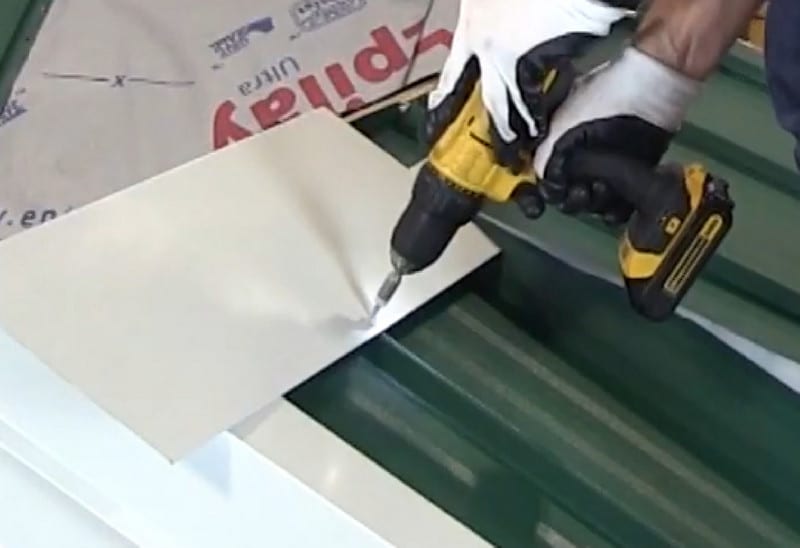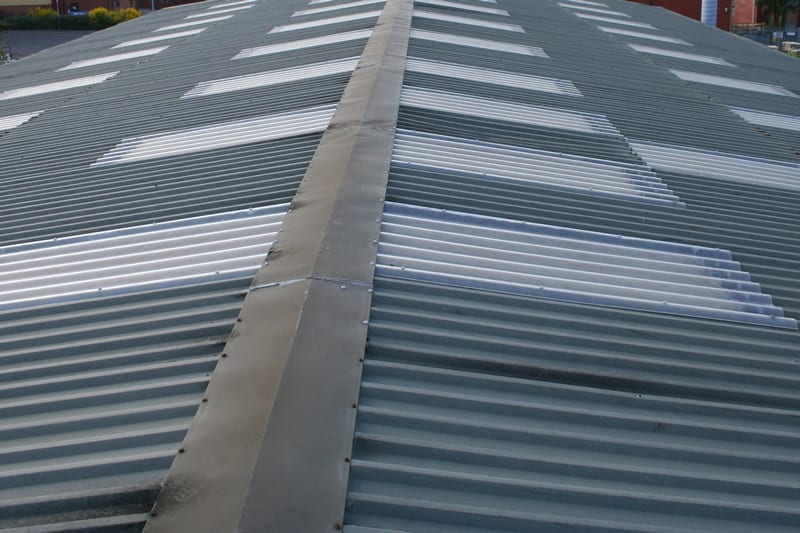Metal roofing offers exceptional longevity and durability, which makes it a smart solution for a commercial or industrial roof recover or replacement.
What’s the difference between roof replacement and roof recovering?
Roof Recover is when you install a new roof over the old roof. However, it’s only a viable solution in certain situations.
Roof Replacement is when you tear off your old roof and install a completely new one in its place. In certain situations, this is the best solution to roofing issues.
Roof Recover versus Replace
For many non-residential roof replacement projects, building owners have the option of either removing and replacing the existing roof, or recovering the existing roof. For most, a roof recover over the existing roof with a new metal roof offers building owners a more affordable solution with all the benefits of a new metal roof.
One of the reasons metal-over-metal roofing is a more affordable option is that owners save on tear-off and removal expenses. Of course, the biggest savings is the fact that you won’t have to pay labor and disposal for removing the existing roof.
A roof recover also creates minimal disruption to the operation of the business itself and generally takes less time overall than a traditional complete “peel and replace.”
When You Should Choose A Roof Recover Over Roof Replacement
In an ideal situation, your existing roof would be in perfect condition, aside from being a bit worn-out. But it’s unlikely your roof will be in perfect condition, however, your roof is a good candidate for recovering if damage is minimal and could be repaired before beginning a recover.
When You Should Choose Roof Replacement Over a Roof Recover
If you’re not following any sort of maintenance plan, you might hardly even notice your roof until something is wrong—which could prevent recovering as an option when you finally notice something is wrong. Most often, it’s a leak that gets your attention. If that’s the case, you’ll need a professional to assess the condition of the roof and help you determine the extent of the moisture present in the existing roof. If there’s too much moisture trapped, the damage may be too extensive for repair to be cost effective. In that scenario, a complete tear-off and replacement would be the best option.
Other Industrial Roof Replacement Considerations
Energy efficiency is something to consider when replacing the roof of a commercial or industrial building. A roof replacement presents building owners with an opportunity to increase the building’s energy efficiency, thereby lowering the energy costs of the building.
While appearance is not typically a primary concern for a commercial or industrial roof recover or replacement project (as most are near flat surfaces), the roof color can impact energy efficiency. A color with a high solar reflectance index (SRI) value, is more energy efficient than bare metal or a darker color (for example white or any light color). Opting for a high SRI paint color can add some nominal upfront costs, but over time, the energy savings from increased energy efficiency outweighs the added expense.
Two Checklists to Help Determine if Your Roof Should be Replaced or Recovered
Completely replace an existing roof if:
- It is too damaged for repair to be a cost-effective option
- It is too damaged to support a recover
- The existing roof is already a recover
- Building codes do not permit recovering (or do not permit an additional recovering)
- A recover would not meet wind up-lift or fire protection requirements
A roof may be recovered if these are met:
- Your existing roof is NOT already a recover layer
- Your existing roof is structurally sound and could support the weight of a recover
- Recovering is permitted by local building code
- Little or no moisture is present within the current roofing system
- The existing roofing system is completely undamaged, or minimally damaged & can be repaired before the recover starts
For more information on metal roofing, continue on to the All American Steel blog page for more articles, or feel free to contact us.


